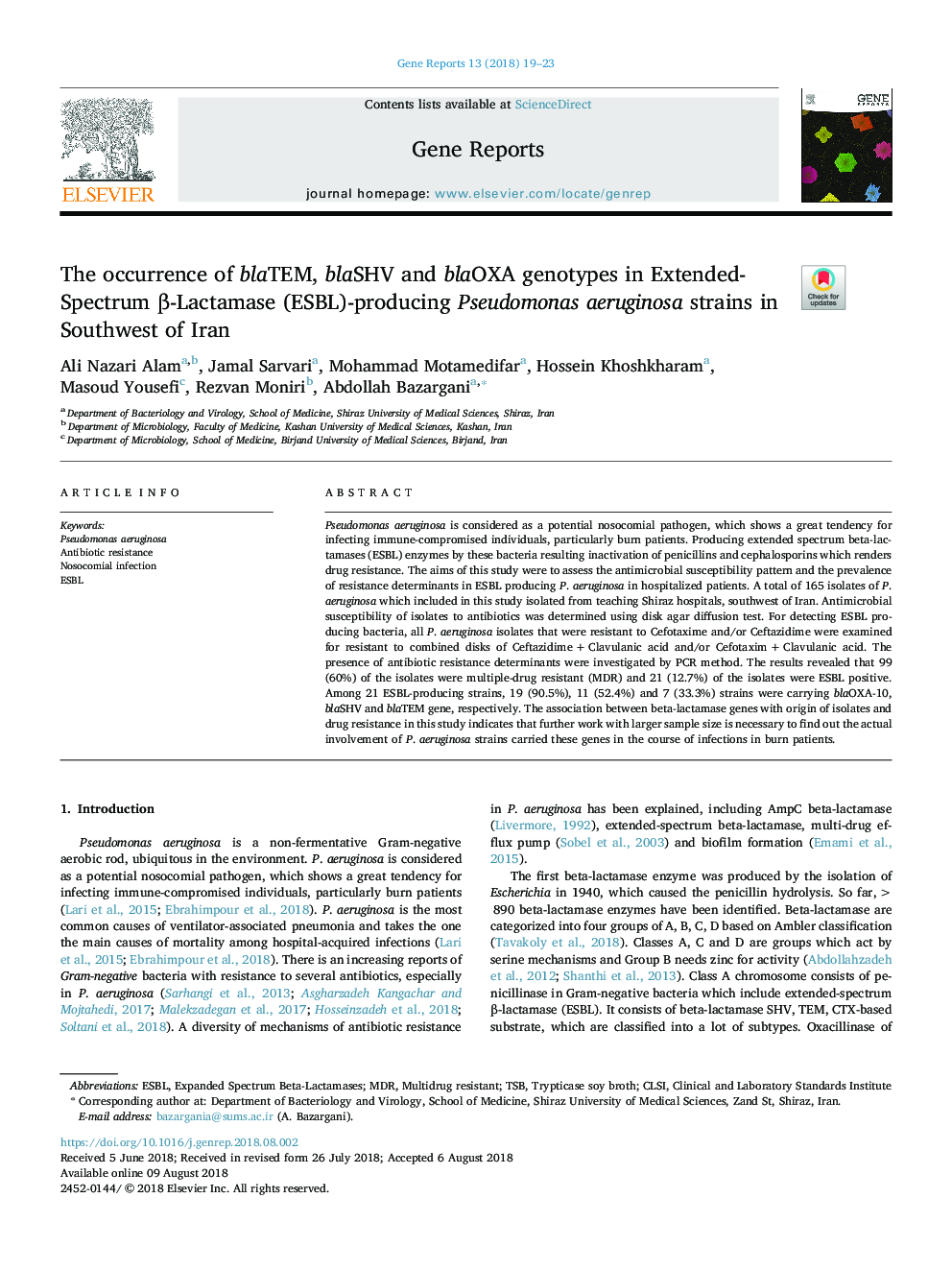| Article ID | Journal | Published Year | Pages | File Type |
|---|---|---|---|---|
| 8646150 | Gene Reports | 2018 | 5 Pages |
Abstract
Pseudomonas aeruginosa is considered as a potential nosocomial pathogen, which shows a great tendency for infecting immune-compromised individuals, particularly burn patients. Producing extended spectrum beta-lactamases (ESBL) enzymes by these bacteria resulting inactivation of penicillins and cephalosporins which renders drug resistance. The aims of this study were to assess the antimicrobial susceptibility pattern and the prevalence of resistance determinants in ESBL producing P. aeruginosa in hospitalized patients. A total of 165 isolates of P. aeruginosa which included in this study isolated from teaching Shiraz hospitals, southwest of Iran. Antimicrobial susceptibility of isolates to antibiotics was determined using disk agar diffusion test. For detecting ESBL producing bacteria, all P. aeruginosa isolates that were resistant to Cefotaxime and/or Ceftazidime were examined for resistant to combined disks of Ceftazidimeâ¯+â¯Clavulanic acid and/or Cefotaximâ¯+â¯Clavulanic acid. The presence of antibiotic resistance determinants were investigated by PCR method. The results revealed that 99 (60%) of the isolates were multiple-drug resistant (MDR) and 21 (12.7%) of the isolates were ESBL positive. Among 21 ESBL-producing strains, 19 (90.5%), 11 (52.4%) and 7 (33.3%) strains were carrying blaOXA-10, blaSHV and blaTEM gene, respectively. The association between beta-lactamase genes with origin of isolates and drug resistance in this study indicates that further work with larger sample size is necessary to find out the actual involvement of P. aeruginosa strains carried these genes in the course of infections in burn patients.
Keywords
Related Topics
Life Sciences
Biochemistry, Genetics and Molecular Biology
Genetics
Authors
Ali Nazari Alam, Jamal Sarvari, Mohammad Motamedifar, Hossein Khoshkharam, Masoud Yousefi, Rezvan Moniri, Abdollah Bazargani,
